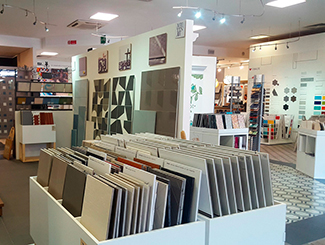 by Alfredo Ballarini23
Novembre
2017
by Alfredo Ballarini23
Novembre
2017
Trading companies in good health
Ceramic tiles trading companies, observed through a representative sample of 57 companies evenly distributed over the three years considered, increased 2015 sales by +5.10% from about €416 to €438 million turnover. EBITDA remains solid, from 6.08% to 6.10% on produced value. This unvariedness is due to an increase in value added and the subsequent cost items, i.e. the cost of labour and other operating expenses. A constantly growing turnover not affecting profitability seems to confirm the strong market demand underlying these companies. We confirm what already said last year, i.e. an overall positive economic trend for the industry. Thanks to the limited variations of the two subsequent negative cost items, amortisation and provisions, EBIT remains positive with a slight increase from 4.22% to 4.32%. Financial expenses net of revenues are almost unvaried , while taxes slightly increase in absolute value, although decreasing their impact on produced value.
The harsh fall in extraordinary income makes it so that final proft increases by only 0.07% compared to the previous year, from 2.17% to 2.24%, for a final global €10 million value. The net financial position remains well restrained, weighing for 11.3% on turnover, only slightly higher than the previous year's 10.8%. To support this there also comes the financial cycle, highlighting a positive relation between days sales outstanding (94) and longer days payable outstanding (123 days), stock rotating 3.6 times a year. A further improvement in management would come from liquidity available being greater in the medium and long term than short term financial requirements, while what happens now is exactly the opposite - see the industry’s analysis section of the net treasury chart. The figure should show the arrow dashed line (liquidity available in the medium and long term) placed above the red (or dark grey, if seen in B/W) area (short term financial needs). Last year's forecasts on profitability about a possible reduction, if not consolidation, of Ebitda levels have been descarded, thanks to good management which was able to maintain gross operating margin on produced value. Current predictions show higher probability that such profit remains between 5.8% and 6.4% of produced value, although there are chances that it may fall below 5.8%. They are therefore similar to those concerning the previous fiscal year but this time forecasts tend to see substantial stability as more feasible. Chances that it should rise over 6.4% are on the other hand certainly negligeable, given the same economic conditions and quality of management.
Switching to a graphical analysis of data, carried out through the new WI-FROM.exe app developed by us to automatically analyse in just one minute any year end financial statement previously filed in Italy, we can quickly trace a series of pictures from which drawing further elements of judgement. The chart illustrating the financial structure performance enables a better evaluation of the company efficiency and the stability of assets and liabilities. It highlights how sales of the examined sector, represented by the triangle on the right, are higher than invested assets, corresponding to the whole rectangular area on the left; therefore the company efficiency as to the investment carried out by the industry's shareholders is more than 1, meaning that the industry's earnings are more than investments. The matter is not without importance: starting from the assumption that businesses are first and foremost a form of investment from which some profit is expected, income results, thanks to the efficiency higher than 1, are in this case amplified if related to invested capital. Net financial debts, shown in the oval area, are lower than sales and invested capital. The industry's net working capital is in the black, i.e. the green rectangle on the right is higher than the green rectangle on the left, indicating balanced debt deadlines (medium and long-term debts are higher than medium and long-term investments). The scenario emerging from the chart “What does it pay? meaning Is there financial stability?" whose "cake" is divided into a red area (3%), representing the factors to improve, and into a green one (97%), which on the other hand highlights what has been achieved, represents a tranquil situation. The final chart “How does it economically work?”shows a more suffering “cake” than the previous one as the red area indicating the factors to improve is around 33-35% while the green one (the positive things accomplished) extends for 65%. It is worth noticing that, being an industry with less value added compared to other sectors, this figure is to be interpreted with less rigidity than the warnings given by indicators.
Ideally summarizing the industry's economic and financial features of this group of companies through a unified rating process, examined through the S&P index but subjectively elaborated, we would have, according to simplified calculations, an A+ rating.